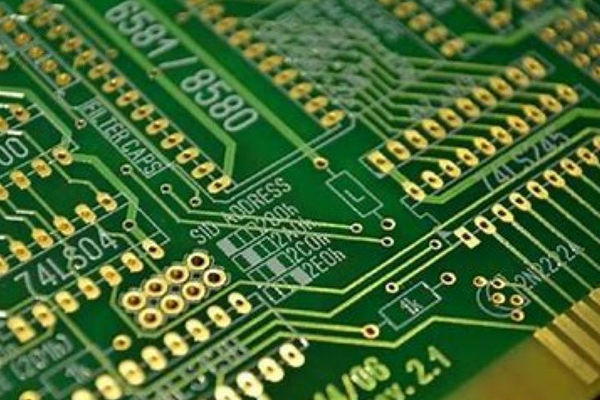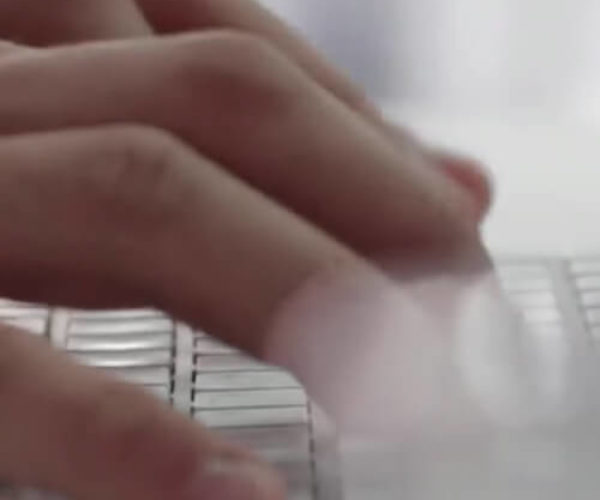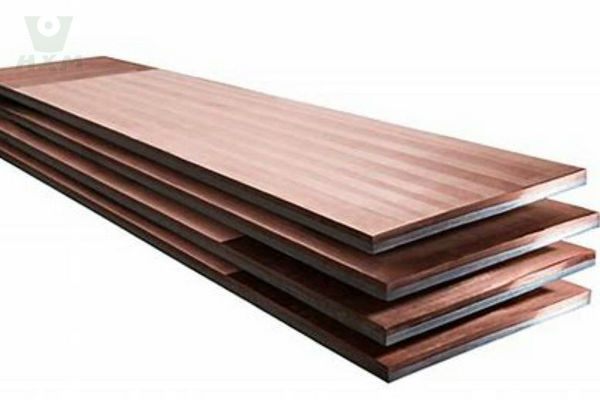Copper Clad Plate Sheet Suppliers and Manufacturers
As a leading clad steel supplier and manufacturer in China’s metal industry, we are committed to providing high-quality copper clad steel that meet your performance and durability requirements. Our copper clad laminates are crafted from high-quality raw materials and have excellent conductivity, corrosion resistance, and excellent processing properties. Whether you need circuit boards for electronic devices or other precision applications, we can provide you with products that meet strict standards.
Contact us today to learn about our copper clad plate prices and other information.
Copper Clad Plate Specification
- Thickness: Total thickness: 5-50mm (cladding material thickness: 1-10mm)
- Sizes: 300 mm x 300 mm(12” x 12”)、600 mm x 600 mm(24” x 24”)、1000 mm x 1000 mm(39.37” x 39.37”), etc.
- Surface treatment No.1 or as per your requirements
- Base Material: FR-4, CEM-1/CEM-3, PTFE, PI, etc.
- Composite Process: Laser Etching, Transfer Lamination, Chemical Plating, Spraying, Electroplating, Lamination
- Manufacturing standard: IPC-6012, IPC-2221, IPC-4101, IPC-4562, JIS C 6480, JIS C 6108, UL 94, UL 796, MIL-PRF-55110, MIL-PRF-31032, EN 60684, ASTM D257, ASTM E84
Looking Forward to Becoming One of Your Copper Clad Plate Suppliers
Table of Contents
Applications of Copper Clad Plate
Copper clad plates, also known as copper clad laminates, have a wide range of applications across various industries due to their excellent electrical conductivity and thermal properties. Here are some key applications:
Printed Circuit Boards (PCBs): The most common use of copper clad plates is in the manufacturing of PCBs, which are essential for the assembly of electronic devices. The copper layer provides the necessary conductive pathways for electrical signals.
Electronics and Electrical Components: Copper clad plates are used in various electronic components such as connectors, switches, and circuit breakers. Their conductivity and durability are crucial for reliable performance in these components.
Heat Sinks and Thermal Management: Due to their excellent thermal conductivity, copper clad sheets are used in heat sinks and other thermal management solutions to dissipate heat effectively in electronic devices.
Aerospace and Defense: In the aerospace and defense industries, copper clad steel plates are used in high-reliability applications, including avionics and military electronics, where performance and reliability are critical.
Automotive Industry: In automotive electronics, copper clad plates are used for various applications, including control units, sensors, and power distribution systems, where high thermal and electrical conductivity is required.
Telecommunications: Copper clad plates are used in telecommunications equipment, including antennas, transmission lines, and signal processing components, where high-frequency performance and signal integrity are essential.
Consumer Electronics: In consumer electronics, such as smartphones, tablets, and computers, copper clad plates are used to create compact and efficient circuit boards, enabling the miniaturization and enhancement of electronic devices.
Medical Devices: Copper clad plates are used in medical devices for diagnostic and therapeutic applications, where precise electronic performance and reliability are necessary.
Renewable Energy: In renewable energy systems, such as solar panels and wind turbines, copper clad plates are used in various components to ensure efficient energy conversion and system reliability.
Industrial Equipment: Copper clad plates are employed in industrial machinery and control systems, where they provide reliable electrical connections and heat dissipation.
These diverse applications highlight the versatility and importance of copper clad plates in modern technology and manufacturing.

Features of Copper Clad Sheet
Copper clad sheets, or copper-clad laminates, are valued for their specific features that make them ideal for a range of applications. Here are some of the key features:
Excellent Electrical Conductivity: Copper clad sheets provide outstanding electrical conductivity, making them ideal for use in printed circuit boards (PCBs) and other electronic components where efficient electrical signal transmission is crucial.
High Thermal Conductivity: They possess superior thermal conductivity, allowing them to dissipate heat efficiently. This is essential for applications such as heat sinks and thermal management in electronic devices.
Durability and Strength: The copper layer is bonded to a substrate (often fiberglass or other composite materials), which provides mechanical strength and durability. This combination ensures the sheets can withstand physical stress and environmental factors.
Corrosion Resistance: Copper has natural resistance to corrosion, which helps extend the lifespan of the copper-clad sheets, especially in challenging environments.
High Reliability: Copper clad sheets offer consistent performance and reliability, making them suitable for critical applications in aerospace, defense, telecommunications, and medical devices.
Flexibility in Manufacturing: They can be manufactured in various thicknesses, sizes, and configurations to meet specific design requirements. This versatility makes them adaptable for different applications.
Good Adhesion: The copper layer adheres well to the substrate material, ensuring a stable and durable bond that maintains the integrity of the copper-clad sheet over time.
Thermal Expansion Compatibility: Copper and its substrate materials typically have compatible thermal expansion properties, reducing the risk of delamination or warping under temperature fluctuations.
Easy Fabrication: Copper clad sheets are amenable to various fabrication processes, including drilling, etching, and plating, which facilitates the creation of complex circuit patterns and designs.
High-Quality Surface Finish: The copper surface provides a smooth finish ideal for high-precision applications, enhancing the overall performance and aesthetics of the final product.
Environmental and Regulatory Compliance: Many copper clad sheets are manufactured to meet industry standards and regulations, ensuring they are safe and environmentally friendly.
These features collectively make copper clad sheets a critical material in electronics and other high-performance applications.
Looking Forward to Becoming One of Your Copper Clad Plate Suppliers
Other Types of Copper Clad Laminates
There are many types of copper composite plates, which are mainly classified according to the substrate, copper layer characteristics, and application areas. The following are some common types of copper composite boards:
1. Copper Clad Plates for Printed Circuit Boards (PCBs)
FR4 copper composite boards: the most commonly used type, the substrate is glass fiber reinforced epoxy resin (FR4), the copper layer is generally 1-2 ounces (oz) thick and is widely used in PCB manufacturing for electronic products.
CEM1/CEM3 copper composite boards: the substrate is paper or composite materials, suitable for low-cost electronic devices.
2. High-Frequency/High-Performance Copper Clad Steel Plate
PTFE (polytetrafluoroethylene) copper composite boards: used for high-frequency and high-speed applications, the substrate is PTFE material, with excellent electrical properties and low dielectric constant, commonly used in communication equipment and radar systems.
Rogers series copper composite boards: including a variety of high-performance materials (such as RO4000, RO3000), with excellent high-frequency performance and stability, widely used in high-frequency electronics and radio frequency applications.
3. Aluminum-Based Copper Composite Board
Aluminum-based copper composite board: The base material is aluminum, which is suitable for applications that require good thermal management, such as LED lighting and power modules, and provides excellent heat dissipation performance.
4. Metal-Based Copper Composite Plate
Copper-based composite board: The base material is copper, which is usually used in applications that require high thermal conductivity, suitable for high-power electronic devices and heat sinks.
5. Polyimide (PI) Copper Clad Sheet
PI copper composite board: The base material is polyimide, which has good high-temperature resistance and mechanical strength, and is suitable for electronic products in high-temperature environments, such as aerospace applications.
6. Paper and Paper Composite Copper Composite Board
Paper copper composite board: The base material is paper material, which is usually used for low-cost and low-requirement applications, such as some basic electronic products and test circuits.
7. Multilayer Copper Clad Plate
Multilayer PCB copper composite plate: It includes multiple copper layers and insulation layers, manufactured by a lamination process, and is widely used in complex circuit design and high-density interconnect (HDI) applications.
8. Flexible Copper Composite Plate
Flexible Printed Circuit Board (FPC): The substrate is a flexible material with good bending and deformation capabilities, and is often used in electronic products that require high flexibility, such as wearable devices and portable electronic products.
Looking Forward to Becoming One of Your Copper Clad Plate Manufacturers
How to Make Copper Clad Plate?
Making a copper clad plate involves several key steps to ensure high quality and performance. Here’s a general overview of the process:
1. Preparation of Substrate
- Material Selection: Choose a suitable substrate material, such as fiberglass-reinforced epoxy (FR4), paper phenolic, or other composite materials, depending on the application.
- Cleaning: Thoroughly clean the substrate to remove any contaminants, dust, or residues that could affect the bonding process.
2. Copper Foil Preparation
- Copper Foil Sourcing: Select high-quality copper foil with the desired thickness. The foil is usually in a roll form and is typically pre-treated for better adhesion.
- Cutting: Cut the copper foil to match the size of the substrate. This ensures that the copper layer will cover the entire surface of the substrate.
3. Lamination Process
- Heat and Pressure Application: Place the copper foil onto the cleaned substrate. The lamination process involves applying heat and pressure to bond the copper foil to the substrate. This can be done using a laminating press or other specialized equipment.
- Temperature and Time Control: Ensure the correct temperature and pressure are maintained during the lamination process to achieve a strong and uniform bond. The temperature typically ranges from 150°C to 200°C (300°F to 400°F), depending on the adhesive and materials used.
4. Cooling and Inspection
- Cooling: Allow the laminated copper clad plate to cool down to room temperature. This helps solidify the bond between the copper foil and the substrate.
- Inspection: Inspect the copper clad plate for any defects, such as air bubbles, wrinkles, or uneven bonding. Ensure that the copper foil is properly adhered to the substrate and that there are no visible flaws.
5. Cutting and Shaping
- Trimming: Trim the copper clad plate to the desired dimensions and shape. This can be done using cutting tools or machinery, depending on the size and complexity of the plate.
- Additional Processing: If needed, perform additional processing steps such as drilling holes, etching patterns, or applying protective coatings.
6. Quality Control
- Testing: Conduct quality control tests to verify the electrical and thermal properties of the copper clad plate. This may include checking the conductivity, adhesion strength, and thermal performance.
- Compliance: Ensure the product meets industry standards and specifications, especially if it is intended for high-reliability applications.
7. Packaging
- Protective Packaging: Package the finished copper-clad plates carefully to prevent any damage during transportation and storage. Use protective materials and label the packages as needed.
This process can vary slightly depending on the specific requirements and equipment used, but these general steps outline the typical procedure for manufacturing copper clad plates.
Looking Forward to Becoming One of Your Copper Clad Plate Manufacturers
Why Choose Huaxiao As Your Copper Clad Plate Suppliers?
Choosing Huaxiao as your copper clad laminates plate supplier offers several compelling advantages:
1. Exceptional Quality
- High-Grade Materials: We use top-quality copper and substrate materials, ensuring excellent electrical and thermal performance for your applications.
- Precision Manufacturing: Our advanced manufacturing processes guarantee precise thickness and uniformity, meeting stringent industry standards.
2. Advanced Technology
- State-of-the-Art Equipment: We utilize cutting-edge technology and machinery to produce copper clad laminates plates with high efficiency and consistency.
- Innovative Techniques: Our R&D team continuously explores and implements the latest innovations to enhance product performance and reliability.
3. Customization and Flexibility
- Tailored Solutions: We offer a wide range of sizes, thicknesses, and configurations to meet your specific requirements.
- Flexible Orders: Whether you need small batches or large volumes, we provide flexible ordering options to suit your production needs.
4. Competitive Pricing
- Cost Efficiency: Our streamlined production processes and supply chain management enable us to offer competitive pricing without compromising on quality.
- Value for Money: We focus on providing high-quality products at cost-effective prices, ensuring excellent value for your investment.
5. Reliable Customer Support
- Expert Assistance: Our knowledgeable support team is available to assist with technical queries, product recommendations, and order management.
- On-Time Delivery: We are committed to meeting delivery deadlines, ensuring that your projects stay on schedule.
6. Commitment to Sustainability
- Eco-Friendly Practices: We adhere to environmentally responsible manufacturing practices, minimizing our ecological footprint and contributing to a sustainable future.
- Compliance: Our products comply with industry regulations and standards, ensuring safety and environmental responsibility.
7. Proven Track Record
- Established Reputation: With years of experience in the industry, Huaxiao has built a strong reputation for delivering reliable and high-quality copper clad laminates plates.
- Customer Satisfaction: Our numerous satisfied clients across various sectors attest to our commitment to excellence and customer service.
Choose Huaxiao as your copper clad plate laminates supplier to experience unmatched quality, reliability, and service. Let us help you achieve your project goals with our premium products and exceptional support.
Looking Forward to Becoming One of Your Copper Clad Sheet Distributors
Contact Shanghai Huaxiao's Copper Clad Plate Supplier Now





